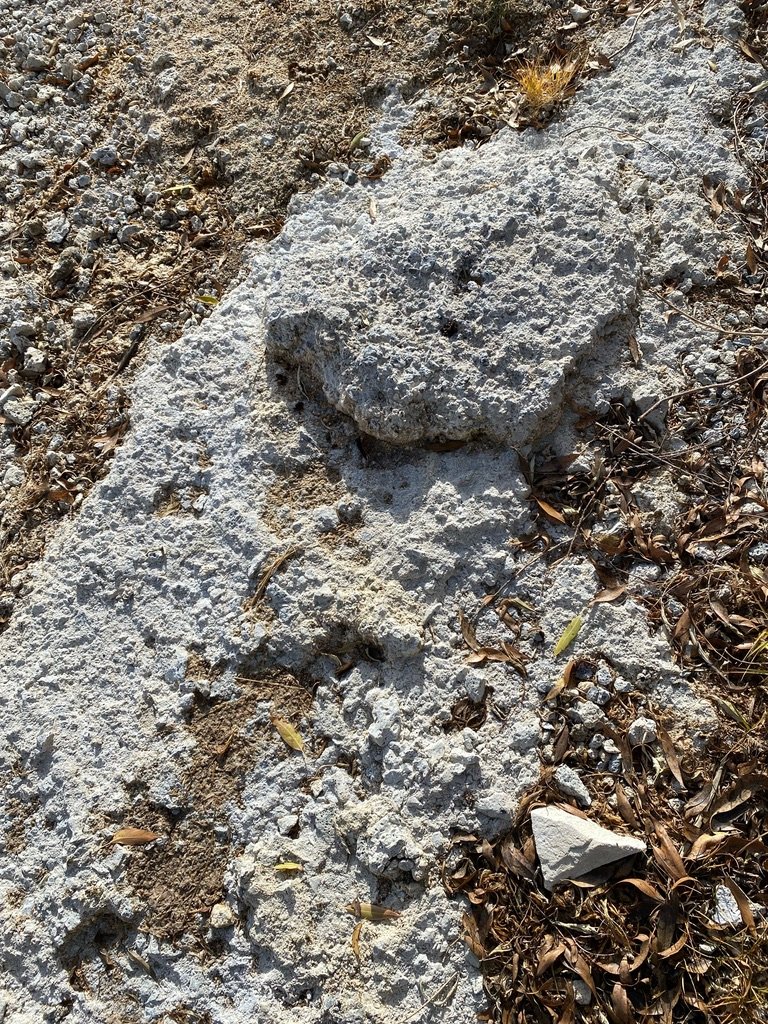
Tufa & Soap Lake Volcano
photos and video of tufa November 2021, and July 2018 is from a kayak showing the flag marking the location of the Volcano (photos S. Moriyasu)
Map showing the location of the “volcano.”
This Soap Lake Tufa formation has a year-round spring flowing out of the top and is locally known as the "Soap Lake Volcano". (July 2018 (flag photos) and November 2021)
shoreline with tufa
shoreline with tufa
Soap Lake Sets Record - an account from 2005 by Dwight Hoy of the Soap Lake Conservancy.
(~ Please never break or take tufa ~ )
The exposure of the Tufa is due to occasional exceptionally low water levels. photo 2005 by Dwight Hoy
Historically Soap Lake water levels have been lowered by the Bureau of Reclamation during growing seasons (spring/summer/fall) pumped into the canals to be used on farmlands for crops. Water elevations are managed by the Bureau of Reclamation’s interception wells. The wells capture underground water flow from under the lake.
While not everyone is pleased with low water levels, the lake exposes an interesting and normally hidden tufa appear.
This is the presence of numerous calcium formations known as tufa which grow exclusively underwater. Tufa is porous rock-like calcium growths (essentially limestone) which, in Soap Lake, vary in size from a few inches in diameter to a reef-like ridge several hundred feet in length. The largest single tufa formation is 10 feet in diameter and over 6 feet in height with about 1 foot showing above lake level. This formation has a year-round spring flowing from the top and is locally known as the "Soap Lake Volcano".
The growth of tufa requires an alkaline lake fed by underwater springs. The spring water is slightly acidic and carries dissolved calcium carbonate. When the spring and lake waters mix, a neutralizing reaction occurs causing the calcium carbonate to precipitate and form these growths. The most spectacular tufa formations occur in Mono Lake, California where some reach as much as 30 feet in height.
(edited from Glassco’s information)
In this image, you can see the green algae and red bacteria that form close to the inner surface of the material. The center is simply calcium carbonate and essentially rock. In the water behind, you can see the dark reddish tufa formations growing where a freshwater stream empties into the lake.
Soap Lake has this somewhat rare geochemical formation with a microbiological origin.
Tufa is related to stromatolites, a similar animal who in the far distant past, produced the oxygen in the atmosphere that we need today for our life. When the earth was formed, there was no oxygen in the atmosphere, until these strange creatures came along.
Tufa and stromatolites today are relatively rare - but not in Soap Lake.
Here on a hike during the 2005 Soap Lake Conservancy Science Conference, two of the speakers, Dr. Michael Storrie-Lombardi and Dr. Holly Pinkart discuss the tufa formations.









